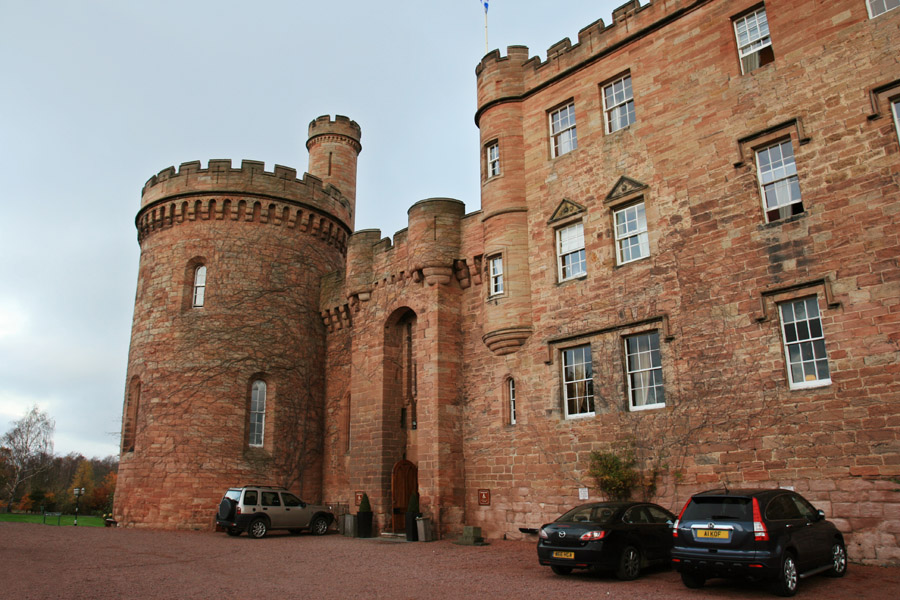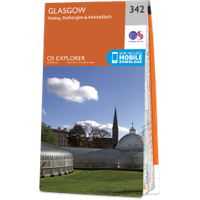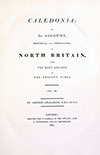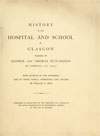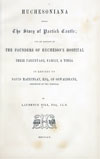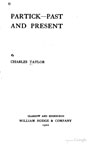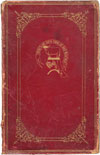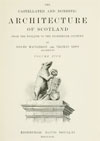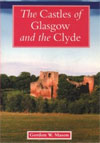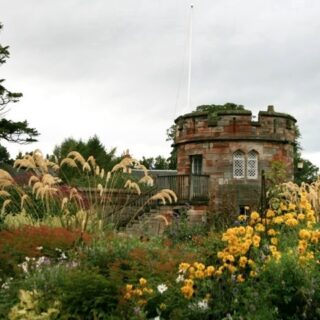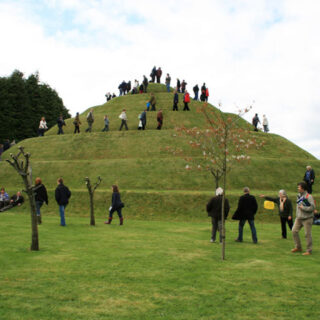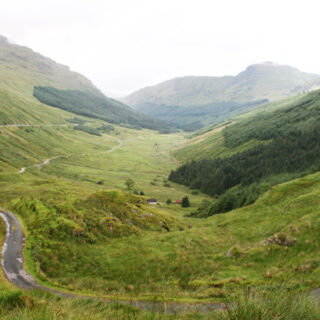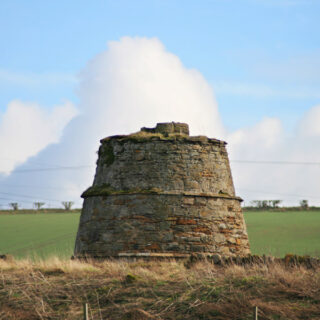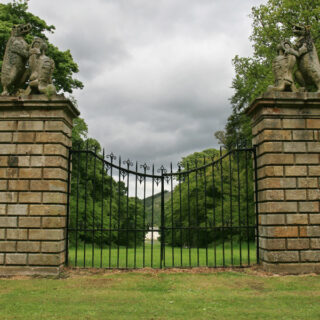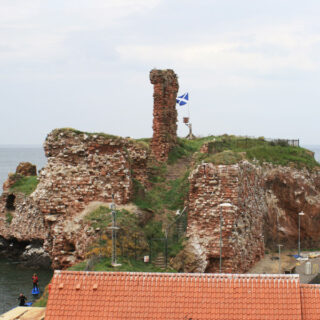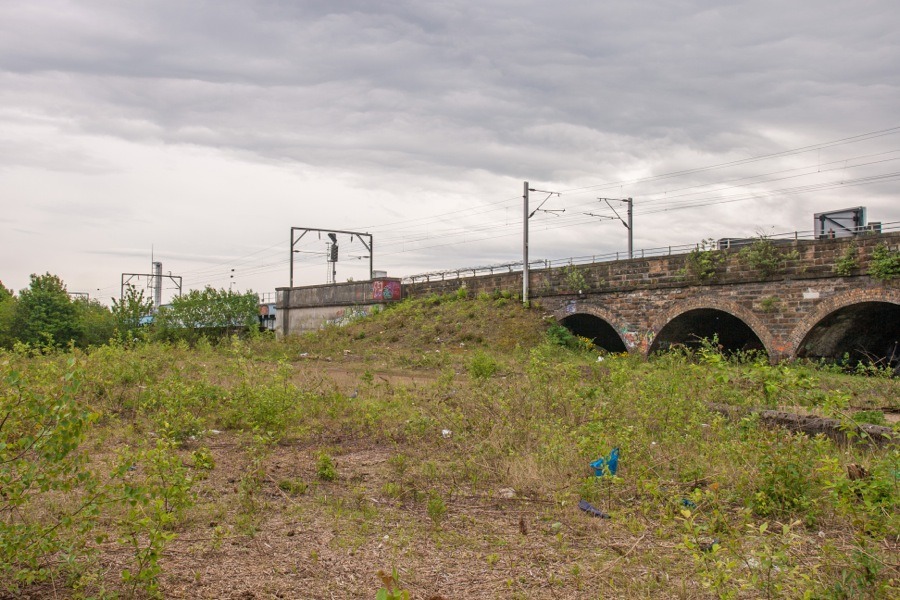
Partick Castle

Partick Castle stood on the west bank of the River Kelvin near the confluence with the River Clyde, but nothing of it now remains.
Partick was an important site from the earliest times, and the Kings of Strathclyde had a residence here possibly as early as the 7th century. It was a strategically important location as there was a natural ford across the Kelvin. King Rhydderch or Roderic may have died here in 614.
The lands of Partick remained royal property until 1136 when part of Partick was given to John Capellanus, later know by his nickname of John Achaius, an early Bishop of Glasgow, by David I. The Bishops had a castle and palace known as Bishop’s Castle next to Glasgow Cathedral, but they built a country residence for themselves at Partick.
The Bishops’ ownership of the lands of Partick were confirmed in 1170, 1178, 1181 and 1186, but in 1296 an Alexander Scott of Partick was recorded in the Ragman Rolls suggesting that he may have owned the lands at that time. However Partick Castle was certainly occupied by the Bishops of Glasgow until the Reformation in 1560 when it was abandoned and may have returned to the Crown.
Following the Battle of Langside in 1568 Regent Murray is said to have given a charter of the mill and other lands at Partick to the Corporation of Bakers in recognition of their supplying his forces with bread and also their bravery during the battle. However it may just have been the Crown mills at Partick, later known as the Mills of Partick rather than the whole of the lands of Partick.
Timothy Pont’s map of Glasgow and the county of Lanark, thought to have been published some time between 1583 and 1596 1596, shows a significant enclosure and a large building marked as Parthick.
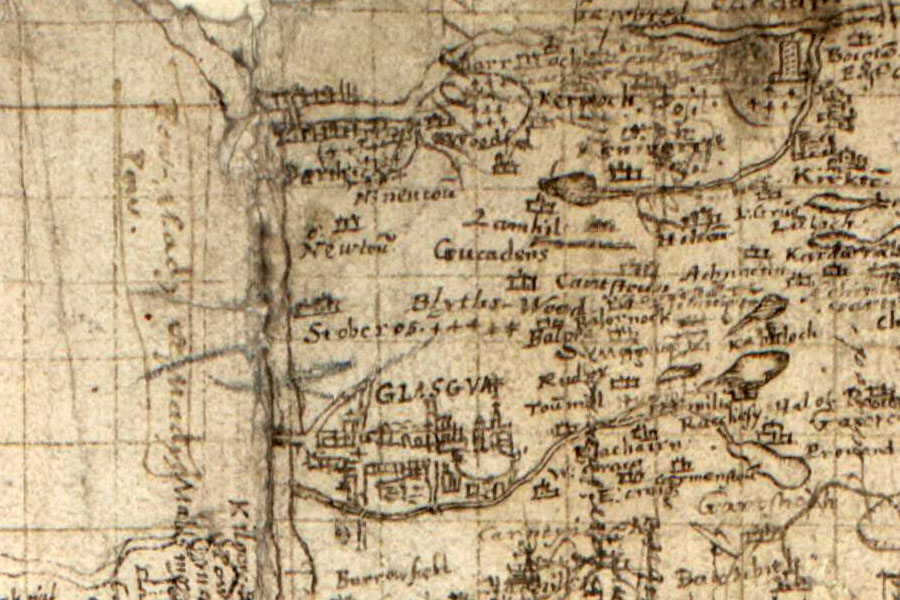
Timothy Pont, 16th century
In 1609 George Hutcheson, a merchant and the first banker in Glasgow, granted land in Partick to his brother Thomas, namely “the 20/ land on the west side of Partick, and the orchard of Partick with 3 acres in Kelvinhaugh, called Myllarland, and a half merkland on the west side of Partick yard, called Ronaldsyard.”
Two years later in 1611 George either built a house on the site of the Bishop’s Castle or extensively renovated the old building. There has been some debate over the years about which scenario was correct.
Some earlier sources state that Partick Castle was built in 1611 by Archbishop Spottiswoode, however these may have confused Partick Castle, also known as the Bishop’s Castle, with the Bishop’s Castle which stood next to Glasgow Cathedral.
According to George Chalmers, writing in Caledonia, Archbishop Spottiswoode is said to have “repaired the cathedral church and archiepiscopal palace” (i.e. the Bishop’s Castle in Glasgow) in 1611. He goes on to say that the Archbishop also built a castle at Partick in the same year, but it may be that he confused the two Bishop’s Castles.
Papers belonging to a descendent of George Hutcheson included a contract for building work with a mason called William Miller from Kilwinning. Whether or not this proves that Hutcheson was responsible for commissioning an entirely new building or for rebuilding and modernising an older building is unclear.
It’s possible that this building work may have incorporated earlier fabric, as the contract, reproduced in Laurence Hill’s Huchesonia, includes references to earlier stonework:
Tak doun the stanework alreddie biggit
(Take down the stonework already built)
Huchesonia
Laurence Hill, Edinburgh, 1855
Indeed a report published by Glasgow Archaeological Society in 1868 mentions the possibility that older work was incorporated into Hutcheson’s house. It also suggests that the reuse of old rubble and masonry from an earlier building, possibly the Bishop’s Castle, may have hastened the demise of the new house which was only occupied for around 160 years.
Whatever the exact origin of the building, the foundation stone for Hutcheson’s house was laid on the 1st of April 1611. It consisted of an L-plan tower house with a vaulted basement, two further storeys plus a garret rising to a height of 10.1m. The basement contained the kitchen and storage cellars, with the east cellar having a service stair leading up to a pantry on the first floor. The main spiral staircase was within the re-entrant angle at the north-east between the main block and the wing to the north. The rest of the first floor was taken up by the main hall, of which was a smaller room in the wing.
Hutcheson died in 1639 and bequeathed money for the construction of a hospital for Glasgow merchants and a free school for underprivileged boys which continues today as Hutchesons’ Grammar School. Later his brother Thomas’ widow, Marion Stewart, seems to hve lived part of the time at the house in Partick.
In 1689 a William Anderson of Partick is mentioned in the Records of the Parliaments of Scotland. George Hutcheson’s uncle, John Hutcheson of Gairbraid, was married to Agnes Anderson, the daughter of William Anderson of Stobcross, so it may be that this later William Anderson was a cousin of George Hutcheson.
By 1710 Partick Castle was owned by John Crawford of Myltoun. When Roy carried out his Military Survey of Scotland it was marked on his map at the eastern corner of a walled garden.
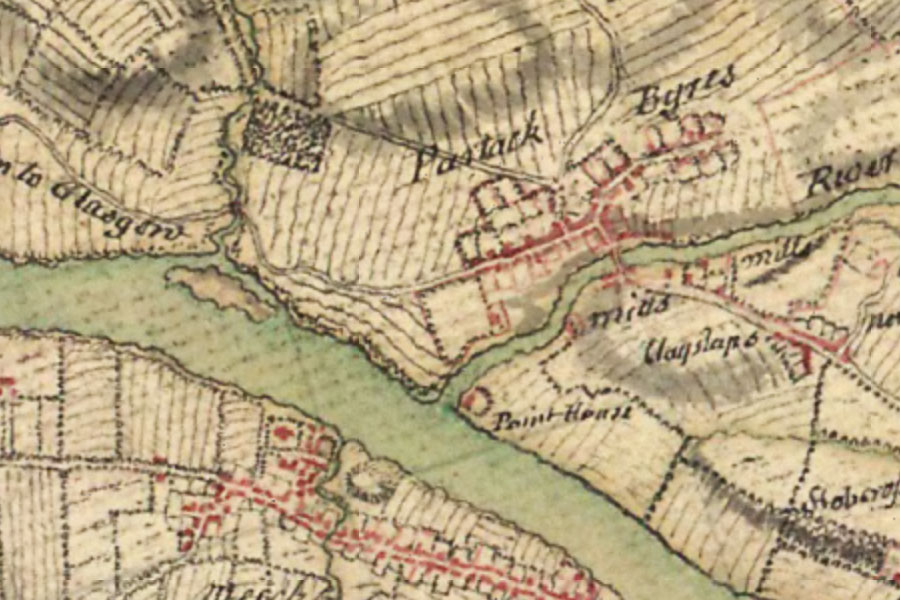
William Roy, 1747-1752
Later in the 18th century it was owned by “common work-people” who rented out the upper floor as a dance hall. The castle was last occupied around 1770, but fell into disrepair and was a roofless ruin by 1783. Stone was taken to build Merkland farmhouse in the same year, while oak timbers were salvaged and used elsewhere although it isn’t recorded where.
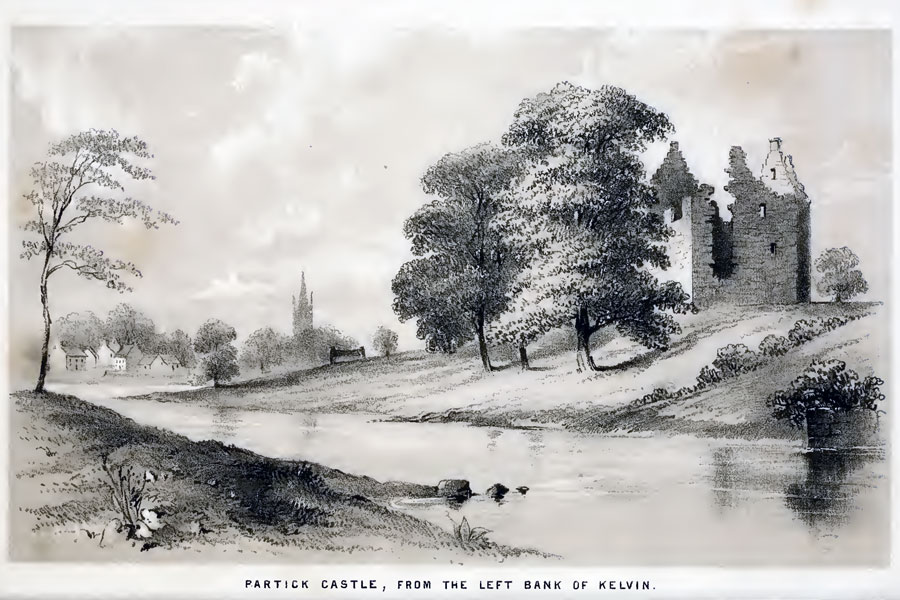
Laurence Hill, Edinburgh, 1855
Partick Castle was finally demolished in 1836 or 1837 and the last of the stone used for building field dykes in the surrounding area. The following verse was written about Partick Castle and is thought to have appeared in an edition of the Bee or Glasgow Magazine in the 19th century:
“Lo, Partick castle, drear and lone,
Stands like a silent looker-on
Where Clyde and Kelvin meet;
The long rank grass waves o’er its walls;
No sound is heard within its halls,
Save noise of distant waterfalls
Where children lave their feet”The Anecdotage of Glasgow
Robert Alison, Glasgow, 1892
In 1864 a foundry was built on the site and on the 25 inch to the mile Ordnance Survey map of 1865, surveyed in 1858, it lies between a graving dock and an engine works. Partick Foundry closed down in the 1960s and was demolished in 1965. The site was then used a scrap metal depot which was subsequently cleared, possibly during the first decade of the 21st century, and today it is just waste ground bounded by the railway, Castlebank Street and the River Kelvin.
The coat of arms of the Burgh of Partick, approved by the Lord Lyon in 1872, includes the depiction of a castle which may represent Partick Castle.
Alternative names for Partick Castle
Bishop's Castle; Partick House; Perdeyc; Perdyc; Perthic; Perthik; Pertique; Pertnech; The Castle
Where is Partick Castle?
Partick Castle is in the parish of Govan and the county of Lanarkshire.
Grid reference:NS 5591 6630
Lat / long:55.86826500,-4.30423440
